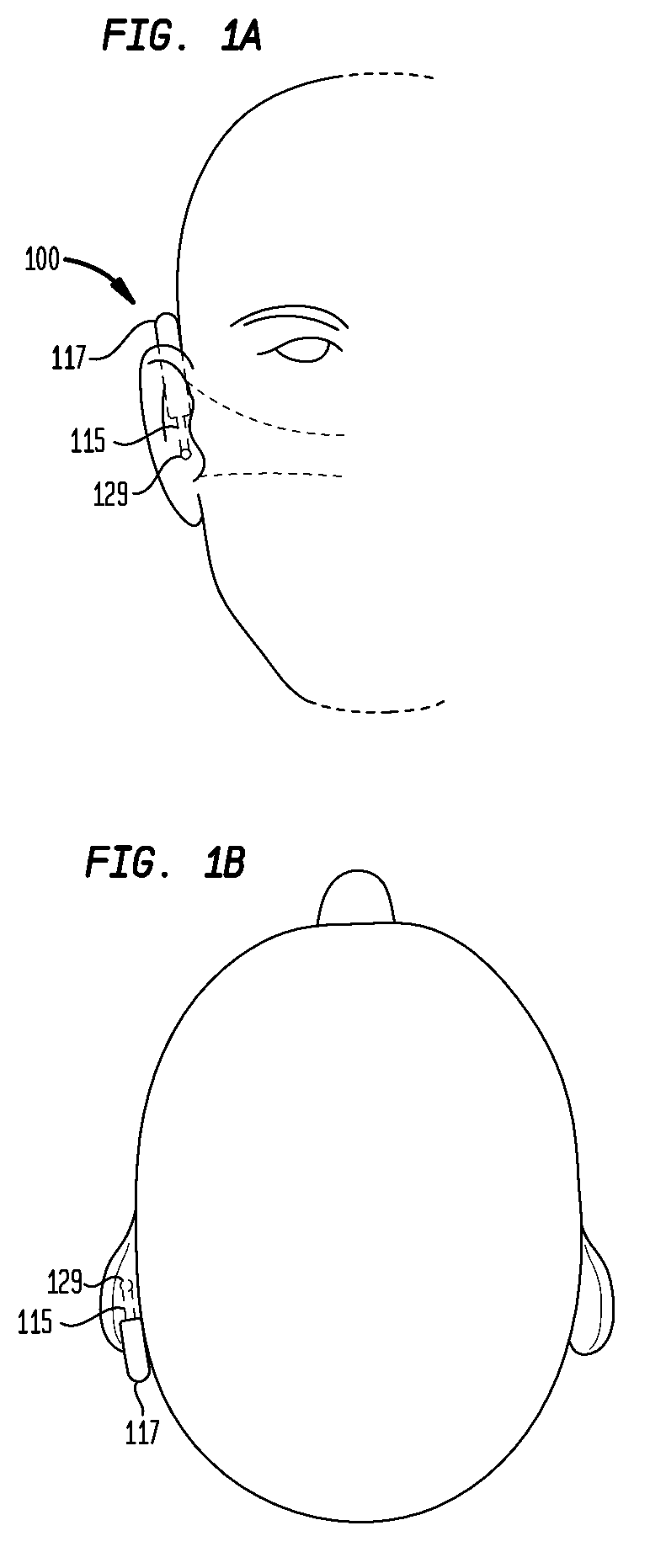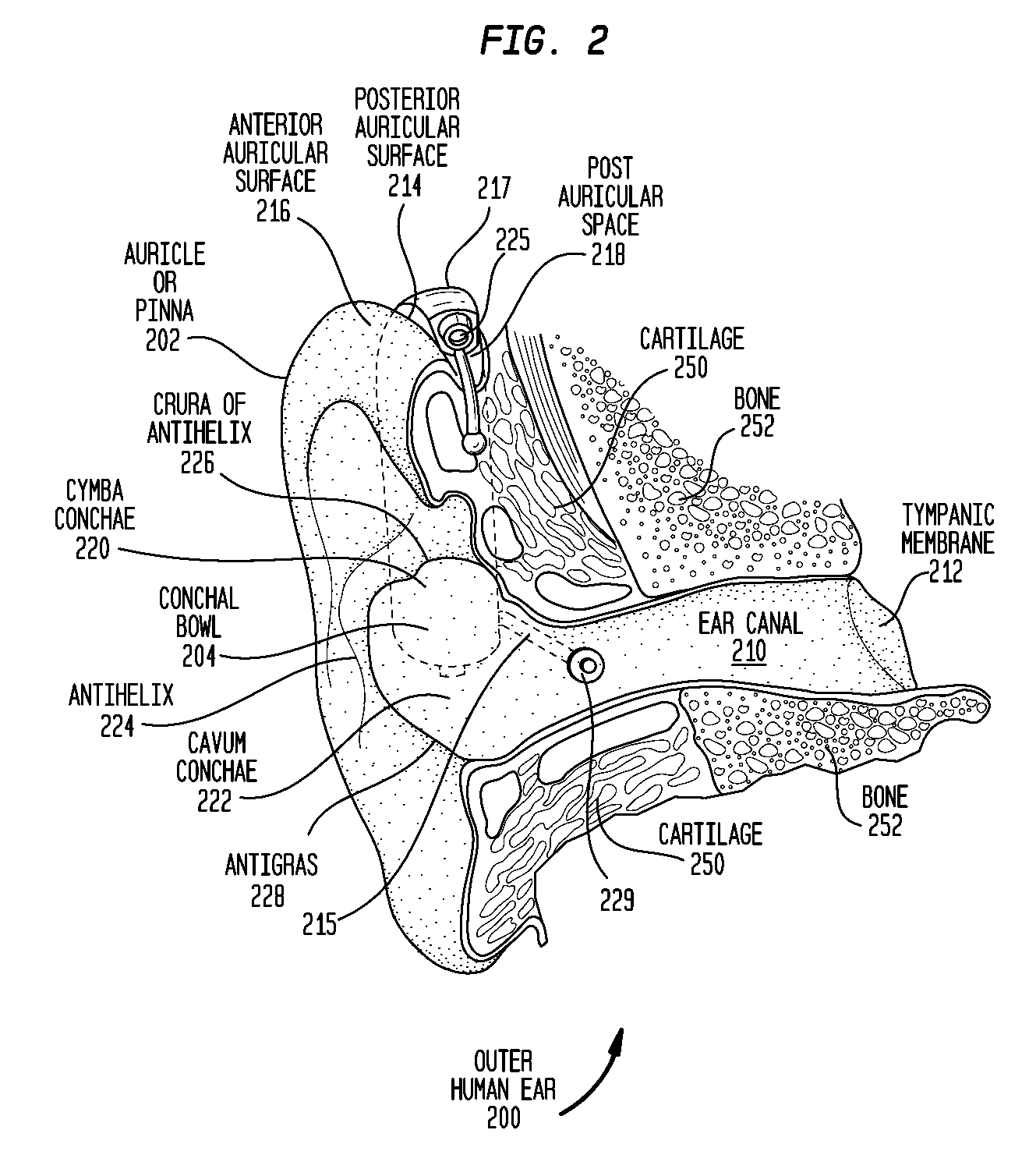Piercing conducted bone conduction device
a bone conduction device and conducting technology, applied in the field of bone conduction devices, can solve the problems of normal mechanical pathways, conductive hearing loss, hearing loss, etc., and achieve the effect of enhancing the hearing of the recipien
- Summary
- Abstract
- Description
- Claims
- Application Information
AI Technical Summary
Benefits of technology
Problems solved by technology
Method used
Image
Examples
Embodiment Construction
[0037]Embodiments of the present invention are generally directed to a bone conduction device for converting a received acoustic sound signal into a mechanical force delivered via a piercing secured to a recipient's bone to the recipient's hearing organs. The piercing conducted bone conduction device includes a sound input component, such as microphone, to receive the acoustic sound signal, an electronics module configured to generate an electrical signal representing the acoustic sound signal, and a transducer to convert the electrical signal into a mechanical force for delivery to the recipient's skull. In certain embodiments of the present invention, the transducer is connected to an extension arm which pierces through and remains in contact with the cartilage bone adjacent the ear canal. The force generated by the transducer is mechanically communicated to the connected piercing (extension arm), which carries that force to the cartilage bone which it pierces and is in contact wi...
PUM
| Property | Measurement | Unit |
|---|---|---|
| electrical | aaaaa | aaaaa |
| mechanical forces | aaaaa | aaaaa |
| conductive | aaaaa | aaaaa |
Abstract
Description
Claims
Application Information
 Login to View More
Login to View More - R&D
- Intellectual Property
- Life Sciences
- Materials
- Tech Scout
- Unparalleled Data Quality
- Higher Quality Content
- 60% Fewer Hallucinations
Browse by: Latest US Patents, China's latest patents, Technical Efficacy Thesaurus, Application Domain, Technology Topic, Popular Technical Reports.
© 2025 PatSnap. All rights reserved.Legal|Privacy policy|Modern Slavery Act Transparency Statement|Sitemap|About US| Contact US: help@patsnap.com



